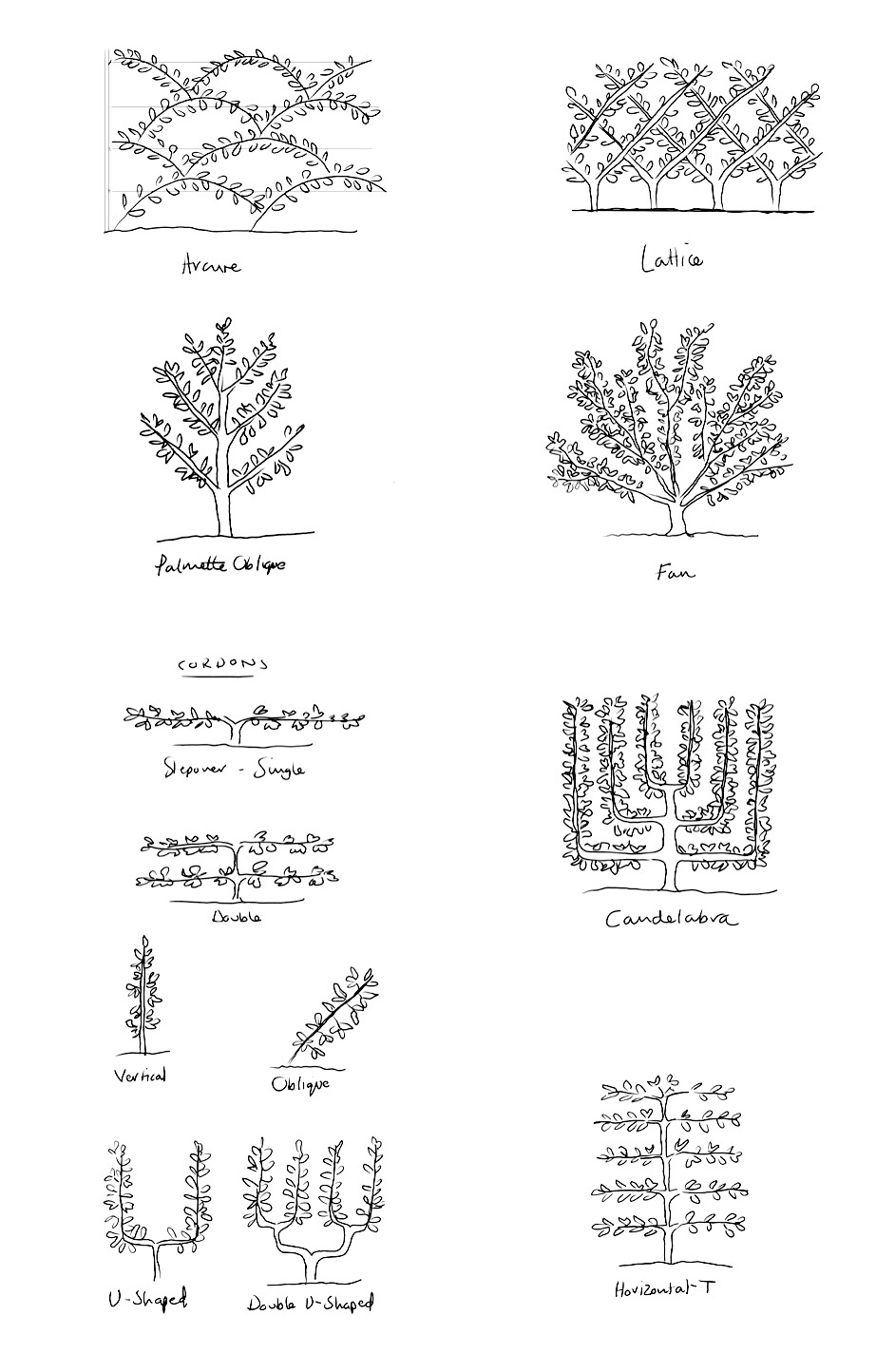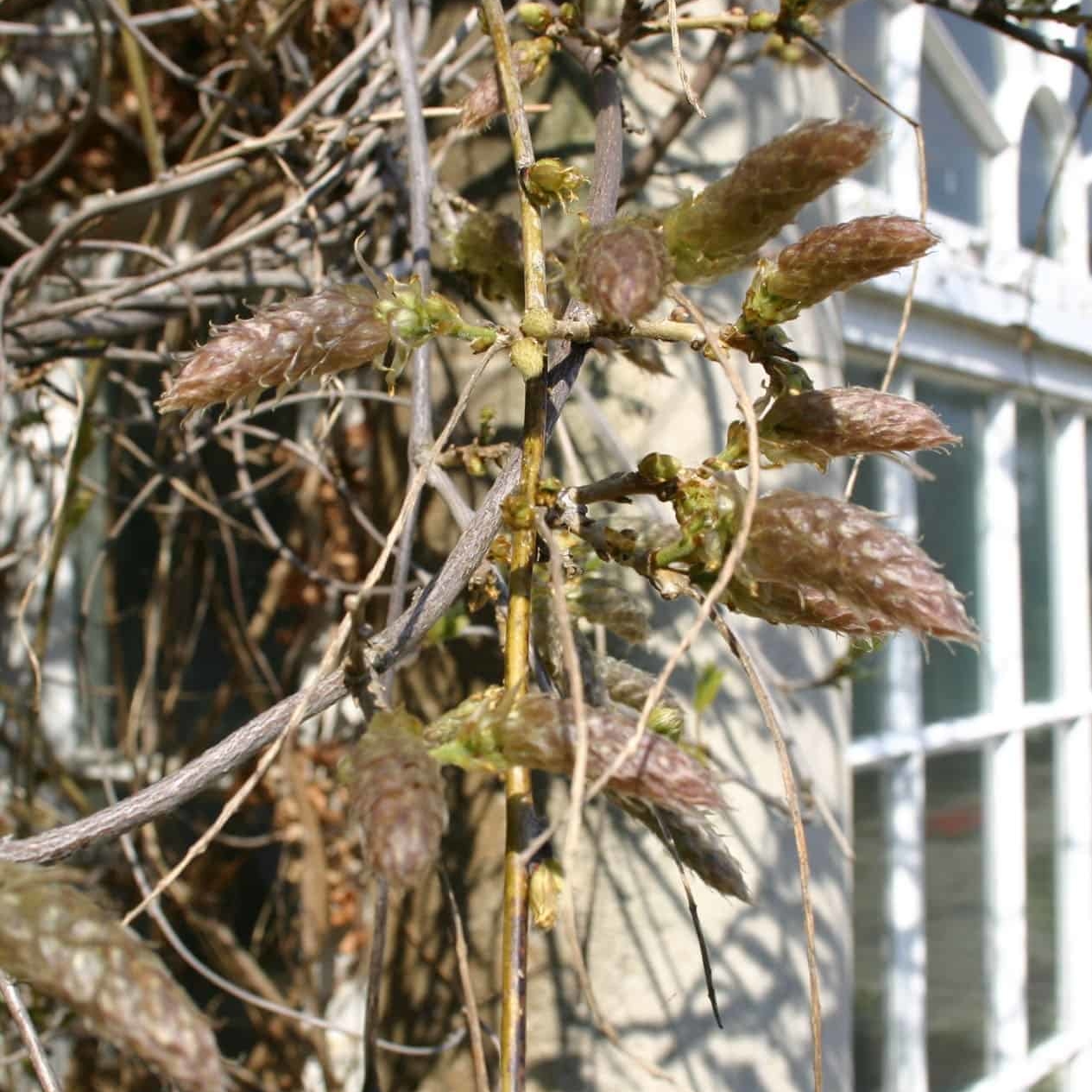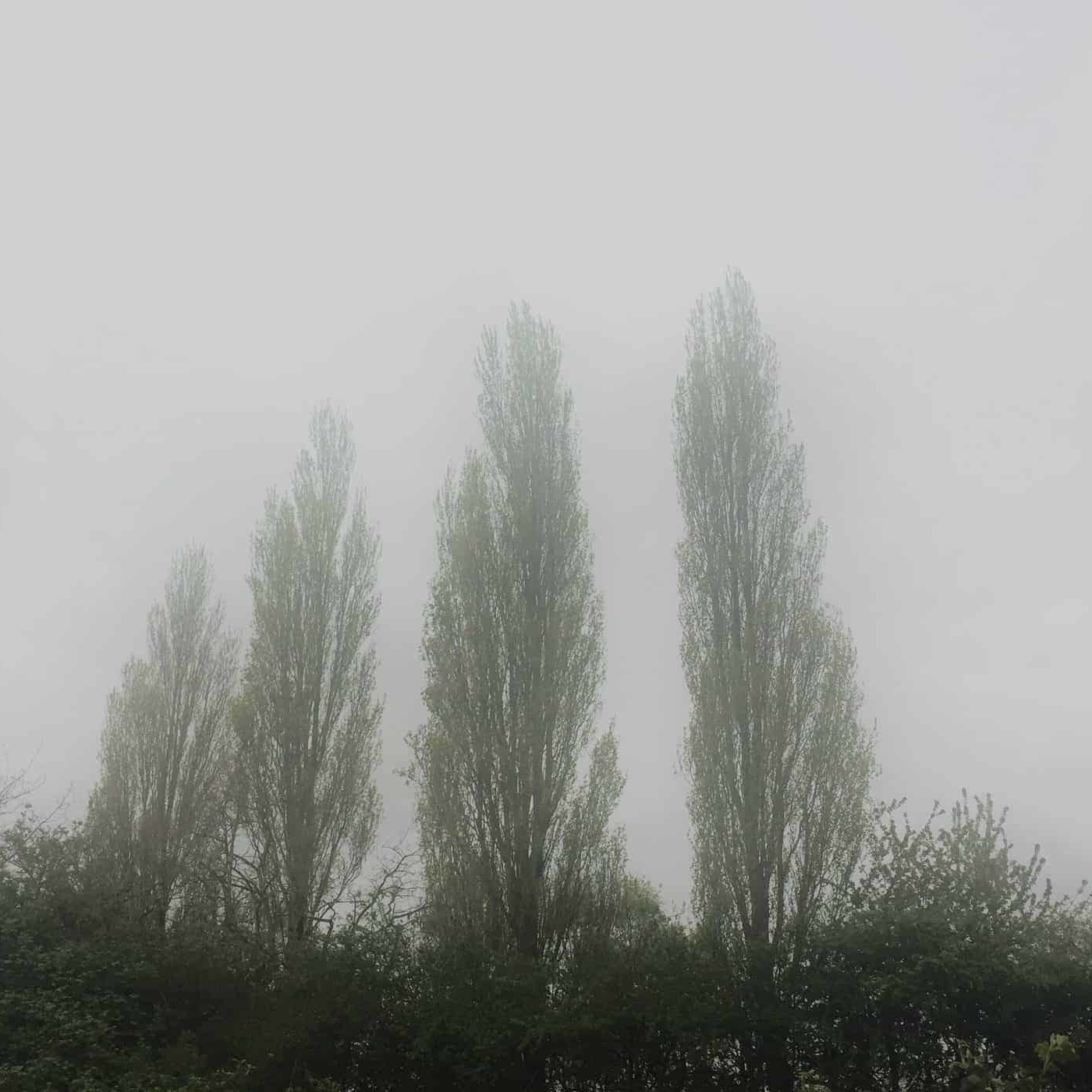Espalier: The Art of Training Trees in Style
Have you ever wished that you could grow fruit trees or ornamental shrubs, but don’t have the space?
If you’re looking to make the most of your garden space while adding a touch of elegance, espalier is a technique well worth considering. It’s a clever traditional method of training trees or shrubs to grow flat against a wall, fence, trellis or freestanding frame, perfect for small gardens, urban spaces, or adding important structure to your garden and a highly decorative feature. Originally derived from the Italian spalliera, meaning ‘to rest the shoulder against’, espalier is not only aesthetically pleasing but also an excellent way to maximise productivity in a small area. This method adds timeless elegance and structure to a range of garden styles such as courtyards, walled gardens and small step over hedges for borders.
The Benefits of Espalier
Espalier offers both practical and visual rewards, making it an ideal choice for a range of garden styles:
- Space-saving – Perfect for smaller gardens or to create defined boundaries.
- Enhanced fruiting – Better sunlight exposure encourages healthy growth and an abundant harvest.
- Improved plant health – Increased airflow helps to reduce the risk of pests and diseases.
- Architectural interest – A well-trained tree can provide a striking focal point or a structured backdrop.
Which Trees and Shrubs Can Be Espaliered?
A wide variety of trees and shrubs lend themselves beautifully to this technique, including both fruiting and ornamental species:
- Fruit trees – Apples, pears, plums, cherries, peaches, nectarines, apricots, and olives.
- Ornamental trees & shrubs – Ginkgo, Magnolia ‘Little Gem’, Tilia (lime trees), Parrotia persica, Hamamelis (witch hazel), Forsythia, Pyracantha, climbing roses, and Chaenomeles (ornamental quince).
Espalier Styles & Shapes
Choosing the right espalier form depends on both aesthetic preference and the growth habit of the plant. Some popular styles include:
- Horizontal T (Tiered Cordon) – A classic and formal structure.
- Palmette Verrier (Candelabra) – Elegant with upright branching.
- Palmette Oblique – A softer, diagonal shape.
- Belgian Fence (Lattice) – An intricate, crisscross design for a dramatic effect.
- Fan – Ideal for trees that respond better to a more relaxed training approach such as cherries and plums.
- Arcure Method – A beautifully curved form that adds fluidity to the design, perfect for climbing and rambling roses
- Cordon styles – Including vertical, oblique, U-shaped, double, triple, spiral, or diamond formations, each offering a unique visual impact.
Creating an Espalier Feature in Your Garden
Espaliered trees work beautifully in both contemporary and traditional gardens, whether used to soften a boundary wall, divide garden areas, or create an eye-catching living sculpture. With careful pruning and support, they can become a stunning long-term feature that combines structure, beauty, and productivity. If you’re interested in incorporating espalier into your garden, we would be delighted to advise on the best varieties, shapes, and placement to suit your space.
Simple Steps for Pruning and Training an Espalier Apple Tree
Step 1. Build or install a strong framework using metal wires and a tensioner system on a wall/ fence or wooden/metal stakes with wires for free-standing. Space wires at 30-40cm apart. Choose your intended espalier shape – will it be a simple horizontal tier or a fan shape? This will influence the shape of structure required.
Step 2. If planting a very young tree or whip, let the tree grow for the first year or two after planting to develop a strong main vertical stem. Alternatively, buy an older tree with established side branches and a strong vertical stem to speed up the process.
Step 3. When the tree has a strong vertical stem, begin to train the branches to grow horizontally along the wires or framework to create your intended shape. Tie the branches gently to the support as they grow, using twine. Be careful not to tie them too tightly as this could damage the tree. Continue to guide and tie branches as they grow. Adjust the ties periodically to allow for expansion and prevent the tree from becoming too tight.
Step 4: Pruning should be done twice a year in late summer and again in late winter.
Light Summer Pruning (Late June to Late July):
Tie new growth to the wires and prune to keep the shape neat and flat. Prune any vertical shoots growing off the horizontal branches, that aren’t part of your chosen branches, back to two buds to encourage fruit production on spurs.
Main Winter Pruning (January-late February)
When the tree is dormant, remove dead, diseased, or rubbing branches. Thin out overcrowded spurs, aiming for 10-15cm spacing along the branches to keep good airflow and light. Prune just above a healthy bud with a vertical cut sloping away from the bud to encourage a replacement stem. Allow small side shoots to grow from the horizontal branches as these produce fruit.
Step 5: As the tree matures, keep shaping it to your desired espalier pattern. You’ll need to prune regularly each year to keep the structure tidy and productive.
Step 6: Water the tree regularly and feed it with fertiliser as needed, according to the tree’s specific requirements. Keep an eye out for pests or diseases, as the compact nature of espaliered trees can make them more susceptible.
Key Tips:
- Patience is key! Espalier takes time, and the tree will need several years to fully establish the desired shape.
- Prune carefully to maintain a clean structure and avoid overcrowding. Disinfect secateurs between different trees to limit transmission of disease.
- Ensure your support is sturdy enough to hold the weight of the mature tree.
Would you like to explore how espalier could enhance your garden? Let’s discuss how we can create something truly special for your outdoor space. Article created by Emily Barnes, August 2025.
Emily Barnes
Emily joined the Bestall & Co team as a Garden Designer and Project Lead after attaining a degree in Horticulture at Nottingham Trent University. Achievements include coming in the top 3 at the Northwest and North Wales Regional Final of The Young Horticulturist of the Year 2019 and winning the People’s Choice Award for her garden ‘Elements of Sheffield’ at RHS Chatsworth Flower Show. Emily has a keen eye for design detail, a passion for all things plants, as well as a deep love for the great outdoors and wildlife.




